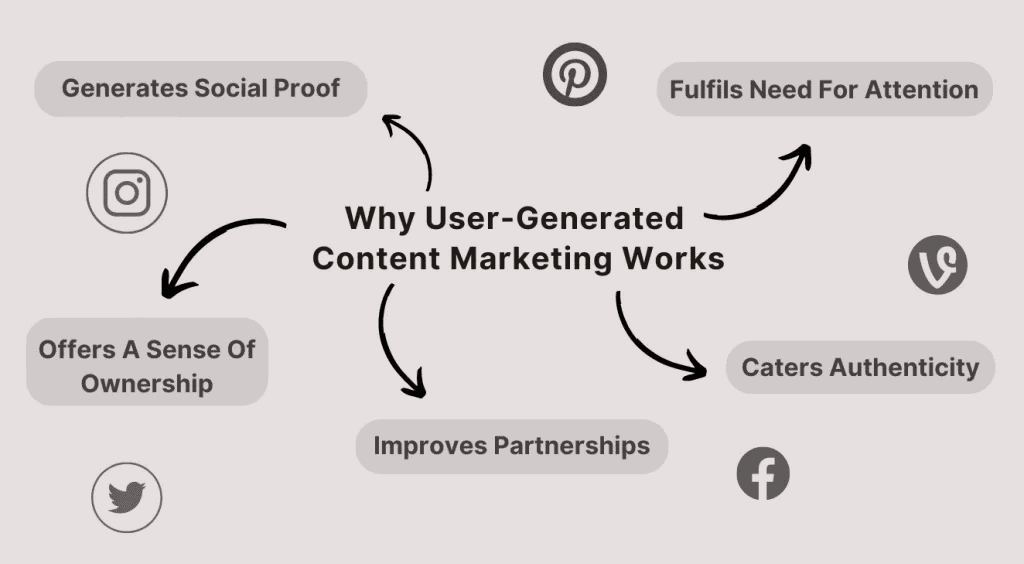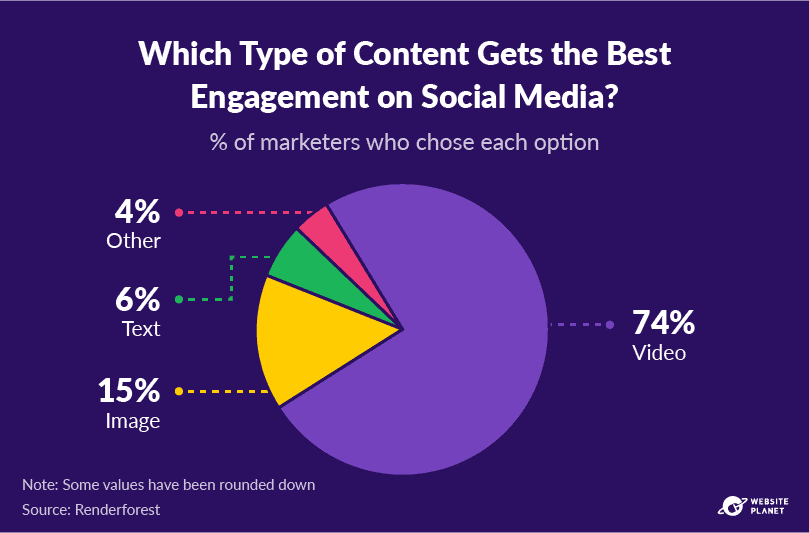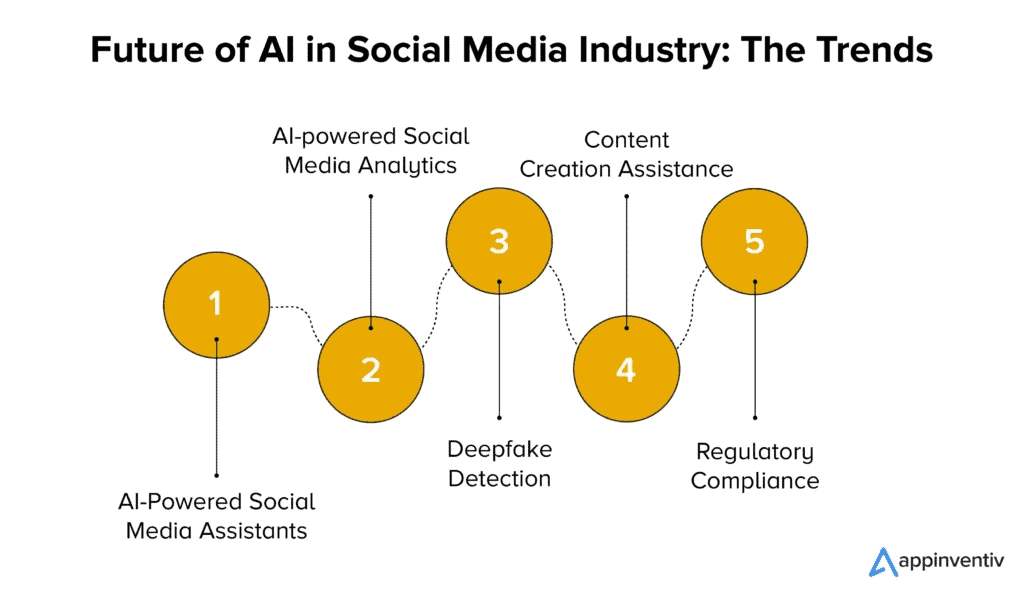The evolution of social media has dramatically transformed the way we communicate, share, and consume information. From its humble beginnings as simple networking platforms to its current status as dynamic hubs for content creation and distribution, social media has reshaped modern society.
One of the most significant shifts in this transformation is the rise of User-Generated Content (UGC), which has empowered everyday users to become creators, producers, and influencers in their own right. UGC refers to any form of content—whether text, images, videos, or reviews—created by individuals rather than brands or traditional media outlets.
Platforms like YouTube, Facebook, Instagram, and TikTok have turned the digital world into an interactive space where users generate the majority of the content, often leading to viral trends, online communities, and even new industries.
This shift has not only influenced personal expression but also AI revolutionized marketing, advertising, and entertainment, with businesses recognizing the immense value in leveraging UGC for brand engagement.
As we explore the rise of UGC, it’s clear that social media is no longer just a place for communication but has become a powerful tool for creativity and cultural exchange, with profound implications for the digital age. For example, utilizing the best wix affiliate apps can be an effective way to engage in affiliate marketing, empowering creators to generate income through their content.
Early Social Media Platforms
The early social media platforms, such as Friendster, MySpace, and early Facebook, primarily focused on networking and connecting users, rather than content creation.
Friendster, launched in 2002, was one of the first platforms to allow users to create profiles, list friends, and share basic content like photos. It laid the groundwork for the social connections that would define future platforms, where an SEO consultant now plays a key role in improving user engagement and content discoverability.
MySpace, which gained popularity in the mid-2000s, expanded on this idea by allowing users to customize their profiles with background images, music, and personal blogs, giving a glimpse of content creation within a social space. It quickly became a hub for musicians and creative individuals to share their work, making it a precursor to the content-driven platforms of the future.
Facebook, which started in 2004, initially focused on connecting students at Ivy League schools but quickly expanded to the general public. Its early features were simple—profiles, status updates, and basic photo sharing—but it revolutionized social networking by emphasizing real-time interactions and fostering user engagement. Over time, innovations like Facebook Marketplace further broadened its appeal, transforming the platform into a hub for both social connection and commerce.
Although Facebook wasn’t initially centered on user-generated content in the way it is today, it laid the foundation for the shift toward content creation by encouraging users to share more personal updates and media.
The Shift to Content-Centric Platforms
The early social media platforms, such as Friendster, MySpace, and the initial versions of Facebook, focused primarily on social networking and connecting users.
These platforms allowed for basic interactions, like profile creation, status updates, and simple sharing of photos, but the content shared was often limited to personal updates and media that primarily served as a digital extension of one’s social circle.
However, with the rise of platforms like YouTube in 2005, the landscape shifted toward content creation as the central feature. YouTube allowed anyone with a camera to become a content creator, offering an accessible platform for users to upload videos, share their personal stories, and even create specialized content.
This move democratized video production, breaking down barriers for aspiring filmmakers, musicians, educators, and hobbyists to reach a global audience.
Simultaneously, the blogging revolution took hold with platforms like WordPress and Blogger, where users could easily create written content on various topics. The ability to publish long-form articles, share personal experiences, or explore niche interests empowered everyday users to become influential voices online.
This shift toward content-centric platforms marked the beginning of the user-driven media landscape, where the focus moved from passive social interaction to active content creation, shaping the future of online communities and social media engagement.
The Explosion of UGC: Facebook, Instagram, and Twitter
The rise of Facebook, Instagram, and Twitter marked a transformative shift in the way user-generated content (UGC) shaped social media. Facebook, initially a platform for connecting with friends, evolved into a content hub.
As it introduced features like photo sharing, status updates, and later live streaming, users became content creators, posting everything from personal updates to videos and links. The platform’s News Feed algorithm began prioritizing UGC, amplifying personal content and facilitating viral video trends, ultimately shaping digital communication.
Instagram, launched in 2010, focused primarily on image-based content. Its visually driven format, combined with filters and editing tools, encouraged users to share curated moments of their lives. Creators in a makerspace can harness the power of UGC to enhance their content.
The introduction of Instagram Stories in 2016 made it easier for users to create real-time, ephemeral content, and soon after, Reels emphasized short-form video, pushing UGC to new creative heights. Brands and influencers embraced these features, turning Instagram into a major space for user-driven marketing.
Twitter, with its microblogging format, allowed users to share thoughts in concise, 140-character posts. It became a platform for real-time discussions, viral hashtags, and trends, giving individuals a direct channel for public discourse.
As the platform evolved, users began generating and sharing breaking news, memes, and opinions, further solidifying the power of UGC in shaping cultural and societal narratives across social media.
The integration of Social Commerce into user-generated content (UGC) platforms has further revolutionized the way businesses and individuals interact online. By blending social media with eCommerce, platforms like Instagram and TikTok have created seamless shopping experiences where users can discover, review, and purchase products directly through content.
Implementing an effective Social Commerce Strategy enables businesses to leverage these platforms for building stronger customer relationships, enhancing brand visibility, and driving sales. This evolution not only enhances user engagement but also empowers creators and brands to monetize their content, solidifying UGC as a driving force behind modern digital commerce.

The Advent of Influencer Culture
The rise of influencer culture represents a significant shift in how content is created, consumed, and marketed on social media. Influencers—individuals with substantial followings—emerged as central figures who could shape trends, promote products, and engage audiences in authentic ways.
This shift began with platforms like YouTube, where creators built dedicated communities around their content. By producing regular videos, vloggers like Zoella, PewDiePie, and others became the first wave of social media stars, blurring the line between entertainment and everyday life.
As Instagram and Twitter gained popularity, the influencer model expanded, with social media platforms offering easier tools for sharing personal stories, photos, and updates.
Influencers began to leverage these platforms to build personal brands and develop niche followings, particularly through lifestyle, fashion, beauty, and fitness content. Their ability to reach a global audience made them valuable assets for brands seeking to engage consumers in more organic and relatable ways.
For dropshipping, influencers play a crucial role in promoting niche products, connecting brands to targeted audiences, and driving sales through authentic endorsements. Influencers evolved from just creators to business entrepreneurs, with many launching their own product lines or becoming brand ambassadors. This symbiotic relationship between influencers and companies led to a new form of marketing: branded content and collaborations.
As the influencer economy continues to grow, the lines between user-generated content, personal branding, and advertising become increasingly intertwined.
The Role of Video Content and Live Streaming
The rise of video content and live streaming has significantly reshaped the social media landscape, emphasizing real-time engagement and creativity. Platforms like YouTube, TikTok, and Instagram have capitalized on video to enhance user interaction, with short-form videos becoming particularly dominant.
TikTok, in particular, revolutionized the consumption of video by promoting bite-sized, algorithmically-driven content that encourages viral trends and user creativity.
This shift has not only created new forms of entertainment but has also provided a platform for everyday users to share personal experiences, hobbies, and talents, allowing them to gain large audiences with minimal production requirements.
Live streaming further expanded video’s role, with platforms such as Twitch, YouTube Live, and Instagram Live offering users the ability to broadcast content in real-time.
This has enabled more direct and authentic connections between creators and their audiences, whether through gaming streams, Q&A sessions, or live events. The interactive nature of live streaming—where viewers can comment and participate—has fostered community building and has influenced new trends in content creation.
Moreover, live video has proven valuable for businesses, offering a direct sales channel through features like live shopping, while also providing influencers and brands with opportunities for instant, unfiltered engagement with their followers.

Social Media Platforms as Content Ecosystems
Social media platforms have evolved into comprehensive content ecosystems, where users generate, curate, and share content across various formats. Platforms like Facebook, Instagram, and TikTok have moved beyond simple social networking to become hubs for entertainment, information, and commerce, relying heavily on user-generated content (UGC) to drive engagement.
On Facebook and Instagram, users create posts, photos, videos, and stories that populate personalized feeds, while algorithms prioritize content based on user preferences, interactions, and trends.
Instagram’s features like Stories, Reels, and IGTV empower users to share short-form and long-form video content, pushing the boundaries of creativity. TikTok, built around UGC, thrives on virality and trends, with users creating diverse videos that spread across the platform through challenges, hashtags, and the “For You” page, which leverages machine learning to surface personalized content.
These platforms also integrate shopping features, turning user-generated content into direct sales channels. Instagram Shops and TikTok’s storefronts allow users to promote and purchase products seamlessly within the app. As businesses adapt to these evolving platforms and their increasingly complex operations, many are turning to fractional COO services to optimize their social media strategies and scale their digital presence.
The ecosystem also fosters communities and niche content, with specialized groups, hashtags, and pages supporting specific interests. This shift has transformed social media from a communication tool to a dynamic, multifaceted space for content creation, consumption, and commerce, driven largely by user input.
Ethical Considerations and Challenges of UGC
The rise of User-Generated Content (UGC) has brought about significant ethical concerns and challenges that need careful attention. One of the most prominent issues is copyright infringement.
As users create and share content, they may unknowingly use copyrighted materials, such as music, images, or videos, leading to potential legal battles for both creators and platforms. Copyright violations not only harm original creators but can also lead to the removal of content and penalties for users.
Another major challenge is the spread of misinformation and fake news. UGC can be manipulated, whether intentionally or accidentally, to spread false information rapidly. This poses a threat to public opinion, political stability, and societal trust.
Platforms have struggled to regulate content effectively, often facing criticism for either allowing misinformation to thrive or over-moderating content, leading to censorship concerns.
Privacy and data security also come under scrutiny as UGC often involves sharing personal information. With increasing surveillance, data breaches, and misuse of personal data, users’ privacy is at risk.
Many platforms collect vast amounts of data from users creating content, which raises concerns about how this information is used and who has access to it.
Finally, content moderation remains a significant ethical challenge. Balancing freedom of expression with responsible content management is difficult, as platforms must decide what constitutes harmful or inappropriate content while respecting user autonomy.
Future of Social Media and UGC
The future of social media and user-generated content (UGC) is poised for significant evolution, driven by technological innovations and shifting user behaviors.
Emerging platforms like Threads and decentralized networks are challenging traditional models by offering greater privacy, user control, and alternative ways to engage with content. These platforms may prioritize more organic, community-driven interactions over the algorithmic amplification seen in current mainstream platforms.
Augmented Reality (AR) and Virtual Reality (VR) are also set to reshape the UGC landscape. With AR and VR technologies becoming more accessible, users will be able to create immersive content that blends the digital and physical worlds.
This could lead to a rise in virtual experiences, from AR filters to fully interactive VR environments, where UGC will shift from static media like photos and videos to dynamic, 3D creations.
Artificial Intelligence (AI) will further transform UGC creation. AI tools for content generation—like deepfakes, AI-driven videos, and synthetic media—will allow users to produce highly sophisticated content with minimal effort. While this could democratize content creation, it also raises concerns about authenticity and the spread of misinformation. Educational platforms are incorporating AI graders to streamline content assessment and provide instant feedback on user-generated essays and articles. This AI-powered evaluation not only helps maintain content quality but also enables creators to improve their writing skills through detailed, actionable insights.
Overall, the future of UGC will likely see a blend of personalized, immersive experiences, increased interactivity, and greater challenges around content moderation and ethical issues, particularly in areas like privacy and security.
Final Thoughts on the Evolution of Social Media
In conclusion, the evolution of social media has transformed the digital landscape, with user-generated content (UGC) at the forefront of this revolution. What started as simple profiles and status updates on early platforms like Friendster and MySpace has grown into a dynamic, content-driven ecosystem that shapes how we communicate, consume, and even create.
Understanding the top searches on Google offers valuable insights into the topics and trends driving this evolution.
From the rise of YouTube videos and the dominance of visual content on Instagram, to the viral power of TikTok, UGC has redefined traditional media consumption and democratized content creation.
The rise of influencers further highlights the economic and cultural influence of UGC, as individuals have become key players in marketing, entertainment, and brand partnerships.
However, with this power comes responsibility, as platforms and creators must navigate challenges such as misinformation, privacy concerns, and ethical issues surrounding content creation.
As we look to the future, emerging technologies like AI, augmented reality, and decentralized networks will likely continue to shape the way UGC evolves.
Ultimately, social media and UGC will remain integral to how we connect and communicate in an increasingly digital world, with its impact on culture, business, and society continuing to unfold in exciting and unpredictable ways.


